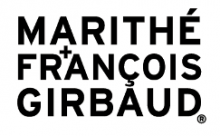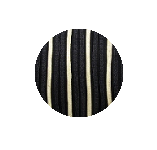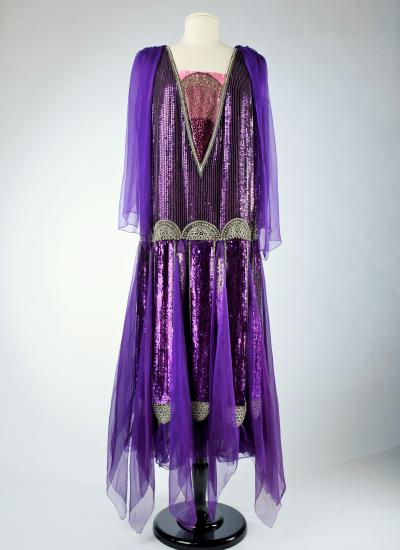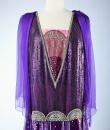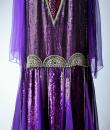A Paul Poiret Ball Gown in Sequined Silk Crepe and Satin- France Circa 1925
Circa 1925
France
An Exceptional ball gown or flapper dress by Paul Poiret. Purple silk crepe, densely embroidered with iridescent pearls, rhinestones and tubular beads. Straight cut, low waist and V-neckline, sleeveless and pink satin underdress. The skirt has a waterfall effect, with skittles embroidered with sequins, interspersed with purple crepe ending in a point. The waist and skittles are punctuated with half-moons embroidered with gladiator effect rhinestones. Modesty of mechanical lace at the neckline and Paul Poiret's Paris label punctuated by Paul Iribe's famous rose. Matching crepe scarf. Clean and flawless dress. Little or not worn. Very good condition of colour and conservation. For collection or wearable as is with no problem.
Dimensions: Equivalent to French size 38-40-42. Height dress including pins 140 cm. Shoulders 38-40 cm. Chest 95-100 cm, waist straight 95-100 cm. Hips 95-110 cm. Scarves 200 cm x 46 cm (rare small snags).
Paul Poiret, probably the most famous fashion designer of the 20th century, had a strong taste for the sense of celebration. After the aesthetic shock provoked by the first performance of the Ballets Russes in 1909 at the Théâtre du Châtelet in Paris, Paul Poiret understood the interest of orientalist theatricality for his creations. Himself the investigator of memorable transvestite parties such as Les Mille et Deuxième Nuit (1911) and Bacchus (1912), the designer's genius was to associate himself with the greatest artists of his time, including Isadora Duncan, Paul Iribe, Raoul Dufy, Georges Barbier and Colette. His participation in the 1925 Paris Universal Exhibition confirmed his worldwide reputation. At the height of his fame, Paul Poiret composed the most explosive ball gowns of his time.


























